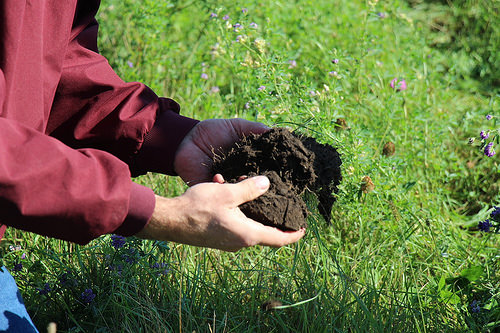
Source: USDA
Strip-till is emerging as a complementary farming practice to some dairy operations throughout the U.S., especially as conservation and environmental awareness become increasingly important parts of sustainable farming.
In this story from Dan Zinkand, NRCS South Dakota, he shares some insight into the objectives of Donnie, Barry and Eli Little who utilize cover crops, precision technology and strip-till to help manage their diverse farming operartion.
The Littles’ farming operation combines brothers Donnie and Barry’s decades of experience with crops and cattle with the talent of Barry’s son Eli’s precision agricultural expertise. In the early 1990s, the brothers began no-tilling their corn, soybeans and hard red spring wheat. Recently, the Littles have done some strip-tilling of corn.
“With no-till, our soils are like a sponge. There used to be some gullies, but not anymore. A three-inch rain will soak into our no-tilled fields,” said Donnie. “Our fuel and machinery costs are less with no-till. We don’t need a digger or a disk. No-till saves a lot of time.”
“I believe my yields are better with no-till than with tillage,” Donnie said. “We have a moisture deficit, and one to two inches of moisture gained with no-till makes a heck of a difference.
For the Littles, multi-species long-season cover crops provide forage for their cow-calf pairs. “We’ve turned most of our hay ground into pasture,” Barry said. “We are working on extending the grazing season as long as we can.”
“Seeding the full-season cover crops is part of our decision to provide more feed for our increased number of cows,” Barry Little says. “The cows and calves did well on the full-season cover crops in October,” Barry said. “After the calves were weaned in October, they adjusted well in the feedlot.”
In early September, cows had grazed and been moved to another paddock, but some sunflowers, big purple top turnips and radishes still stood as the Littles and Dylla evaluated the post-grazing condition of the soil.
“Getting cover crops planted will do wonders for soil health and soil biology,” Dylla says.
Cover crops do more than provide forage for cows. They also help farmers manage excessive moisture. “We had a lot of rain last fall,” Dylla says. “Any fall moisture is really going to be excessive, so you have to make use of it with cover crops. Instead of the nutrients leaching out of crop ground, the cover crops bring them back up to the surface where they are available for next year’s crop.”
To read the full story, click here and to learn more about NRCS conservation programs and soil health, visit your local USDA Service Center or http://www.nrcs.usda.gov/GetStarted.





